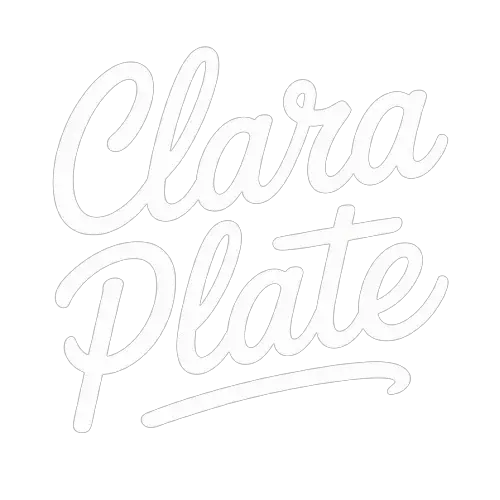When I think of autumn mornings, I think of pumpkin pancakes. I didn’t always, though. For years, pancakes in my kitchen were the plain kind—flour, eggs, milk, a drizzle of syrup on top. Comforting, yes, but never something I craved. That changed one chilly October morning when I had half a can of pumpkin puree sitting in the fridge from a pie I never finished. My mother always taught me to waste nothing, so I whisked it into pancake batter almost on a whim.
I didn’t expect much, but the kitchen filled with a cozy, spiced aroma that instantly reminded me of childhood. That first bite was tender, warmly spiced, and just sweet enough—it was like autumn itself on a plate. From that day on, pumpkin pancakes became my quiet tradition whenever the leaves start to turn, a way to bring warmth and nostalgia into the house even before the coffee is finished brewing.
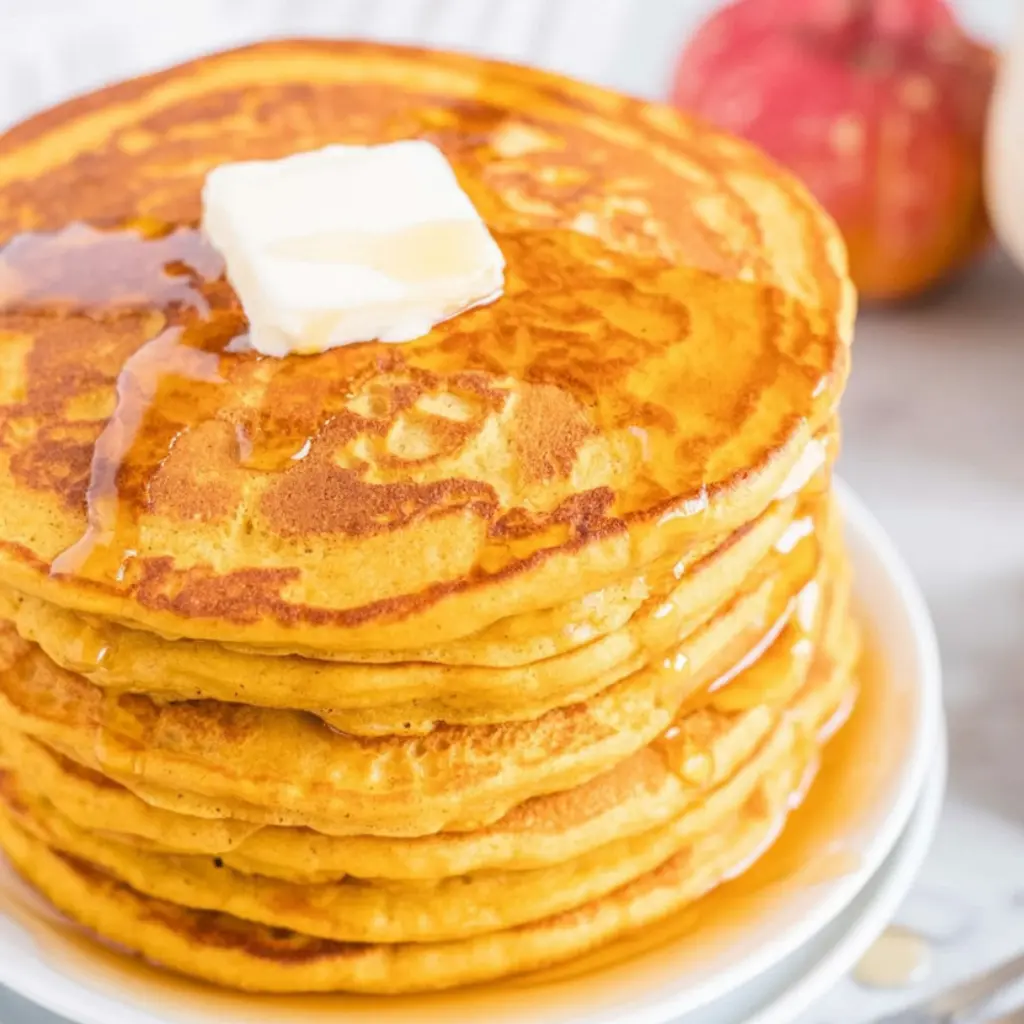
Why You’ll Love This Recipe
- Soft and fluffy, with just the right touch of pumpkin spice
- Simple ingredients you probably already have in your pantry
- A great way to use up leftover pumpkin puree
- Perfect for cozy mornings or holiday brunches
- Freezer-friendly, so you can enjoy them later too
Ingredients You’ll Need
- All-purpose flour – I use regular flour, but I’ve also swapped in half whole wheat when I wanted something a bit heartier. If you use all whole wheat, the pancakes will be denser, so just keep that in mind.
- Pumpkin puree – Not pumpkin pie filling, which is already spiced and sweetened. Canned puree works beautifully, but if you’ve roasted and mashed your own pumpkin, even better. The flavor is more earthy and less sweet.
- Milk – Any milk will do. I’ve made these with whole milk for richness, almond milk when that’s all I had, and even buttermilk, which gives them a nice tang.
- Eggs – They bind the batter and give it structure. Room-temperature eggs help everything mix more smoothly.
- Brown sugar – Adds sweetness and a subtle molasses depth. I’ve used maple syrup instead, and while it makes the batter a touch looser, the flavor is wonderful.
- Baking powder and baking soda – These are the keys to fluffiness. Make sure yours are fresh; old leaveners will leave your pancakes flat.
- Salt – Just a pinch to balance everything out.
- Pumpkin pie spice – I like a blend of cinnamon, nutmeg, ginger, and cloves. If you don’t have the blend, use whatever warm spices you do have. A little cinnamon alone will still make the pancakes sing.
- Vanilla extract – Optional but adds a gentle warmth that rounds everything together.
- Butter or oil for the pan – I usually use butter for flavor, though oil works fine if that’s what you prefer.
How to Make It (Step-by-Step Instructions)
First, I whisk together the dry ingredients—flour, baking powder, baking soda, salt, and spices—in one bowl. This step might feel unnecessary, but I’ve learned the hard way that skipping it leaves little pockets of baking soda in the batter, and nobody wants a bitter bite of pancake.
In another bowl, I mix the wet ingredients: pumpkin puree, eggs, milk, sugar, and vanilla. The batter will look a little thick and deep orange, which is exactly what you want. I always pause to take in the smell at this stage—the pumpkin mixed with cinnamon and nutmeg is enough to make me feel like the day’s off to a good start.
Next, I pour the wet ingredients into the dry and stir gently. This is the moment where restraint matters. Years ago, I used to beat pancake batter until it was perfectly smooth, only to end up with tough, flat pancakes. Now I leave a few lumps, knowing they’ll melt away on the griddle. The batter should be thick but pourable—if it feels too stiff, a splash more milk will loosen it.
I heat a skillet or griddle over medium heat and grease it lightly with butter. Once it’s hot, I ladle about a quarter cup of batter for each pancake. They’ll spread just a little but not too much. The trick is patience—wait until you see bubbles forming across the top before flipping. If you flip too early, they’ll fall apart, and if you wait too long, they’ll be dry. The sweet spot is when the edges look set and you see steady bubbles.
Flip gently and cook the other side until golden brown. I usually keep finished pancakes warm in a low oven while I finish the batch, though my family tends to swipe them straight off the plate as soon as they’re ready.
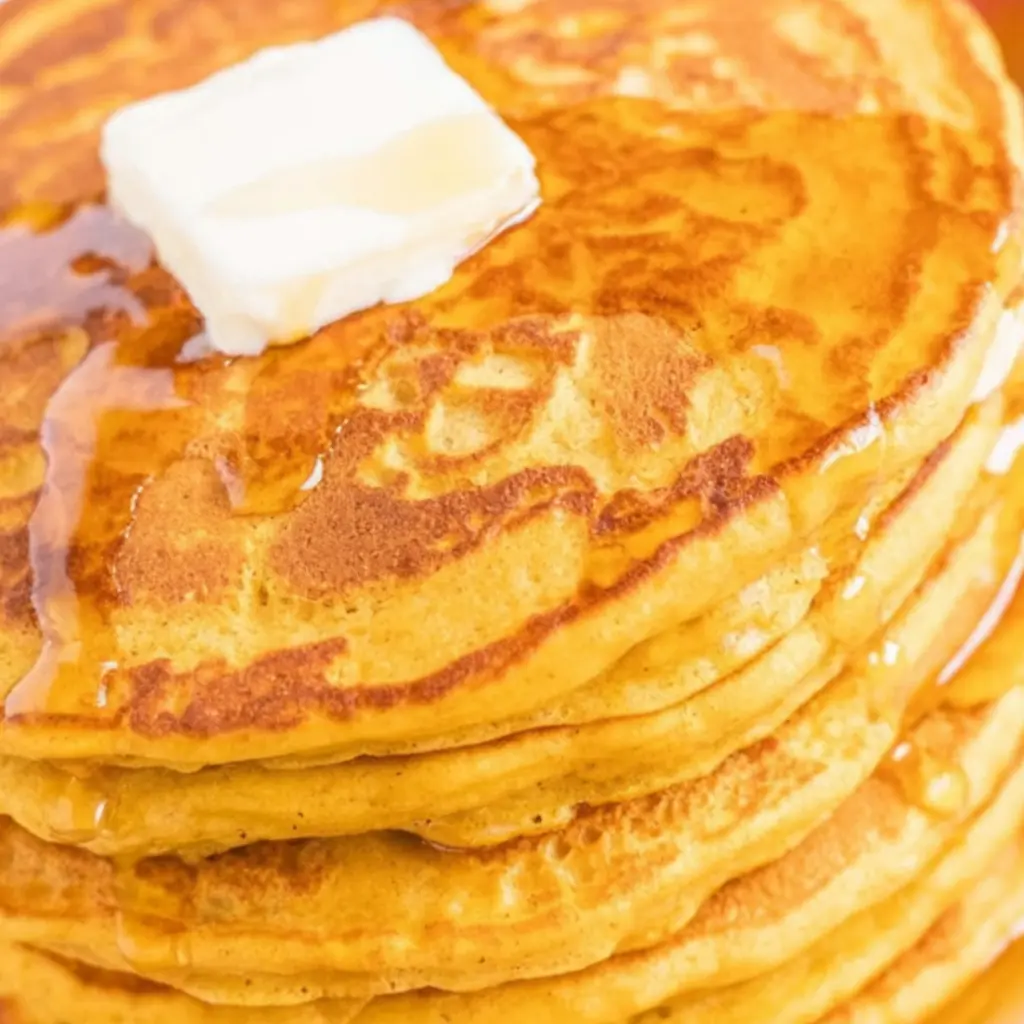
Expert Tips for the Best Results
I’ve found that the most important key to perfect pumpkin pancakes is balance. Too much pumpkin, and they turn gummy; too little, and you lose the flavor. The one-cup measure is just right. Don’t rush the mixing—overworking the batter is the fastest way to end up with tough pancakes. Keep the skillet at medium heat rather than high; pumpkin has natural sugars that can burn if the heat is too aggressive. And remember, the first pancake is always the “tester.” If it comes out too pale or too dark, adjust your heat before continuing.
Variations & Substitutions
Over the years, I’ve played around with this recipe in all sorts of ways. Once, when I ran out of milk, I used half coffee and half cream, and the pancakes had this wonderful café-like aroma that paired perfectly with maple syrup. I’ve stirred in chocolate chips for my kids and chopped pecans for myself when I wanted some crunch. If you’re feeling adventurous, folding in a spoonful of ricotta makes them extra creamy. And while I usually stick with pumpkin puree, I once used mashed sweet potato without telling anyone, and no one noticed a difference—except that the pancakes were just as delicious.
Serving Suggestions
Pumpkin pancakes shine on a chilly weekend morning, stacked high with butter melting down the sides and a drizzle of maple syrup. Sometimes I like to dust them with a little powdered sugar if I’m feeling fancy. They pair beautifully with a strong cup of coffee, but if you’re serving a brunch, they also go well alongside scrambled eggs and bacon for a more filling spread. On holidays, I’ve even made them smaller, almost silver-dollar sized, to serve on a big platter where people can take one or two without committing to a full stack.
Storage & Reheating Instructions
These pancakes keep surprisingly well. I let leftovers cool completely, then stack them with parchment paper between each one and store them in an airtight container in the fridge. They’ll stay good for about three days. For longer storage, I freeze them the same way, and they reheat beautifully in the toaster or oven. Just know the texture will be slightly less fluffy than fresh, but the flavor holds steady. I don’t recommend the microwave, though—it tends to make them rubbery.
Recipe FAQs
Can I make the batter ahead of time?
You can, but I don’t recommend letting it sit too long because the leaveners start working right away. If I know I’ll be short on time, I mix the dry and wet ingredients separately the night before and combine them in the morning.
Can I use fresh pumpkin instead of canned?
Yes, just roast and mash it well so there are no big chunks. Fresh pumpkin tends to hold more moisture, so you may need to reduce the milk slightly.
What’s the best topping for pumpkin pancakes?
Maple syrup is classic, but I also love a dollop of whipped cream or even a spoonful of vanilla yogurt when I want something lighter.
Can I make these gluten-free?
I’ve had success with a good 1:1 gluten-free flour blend. The texture is a little more tender, but the flavor is still wonderful.
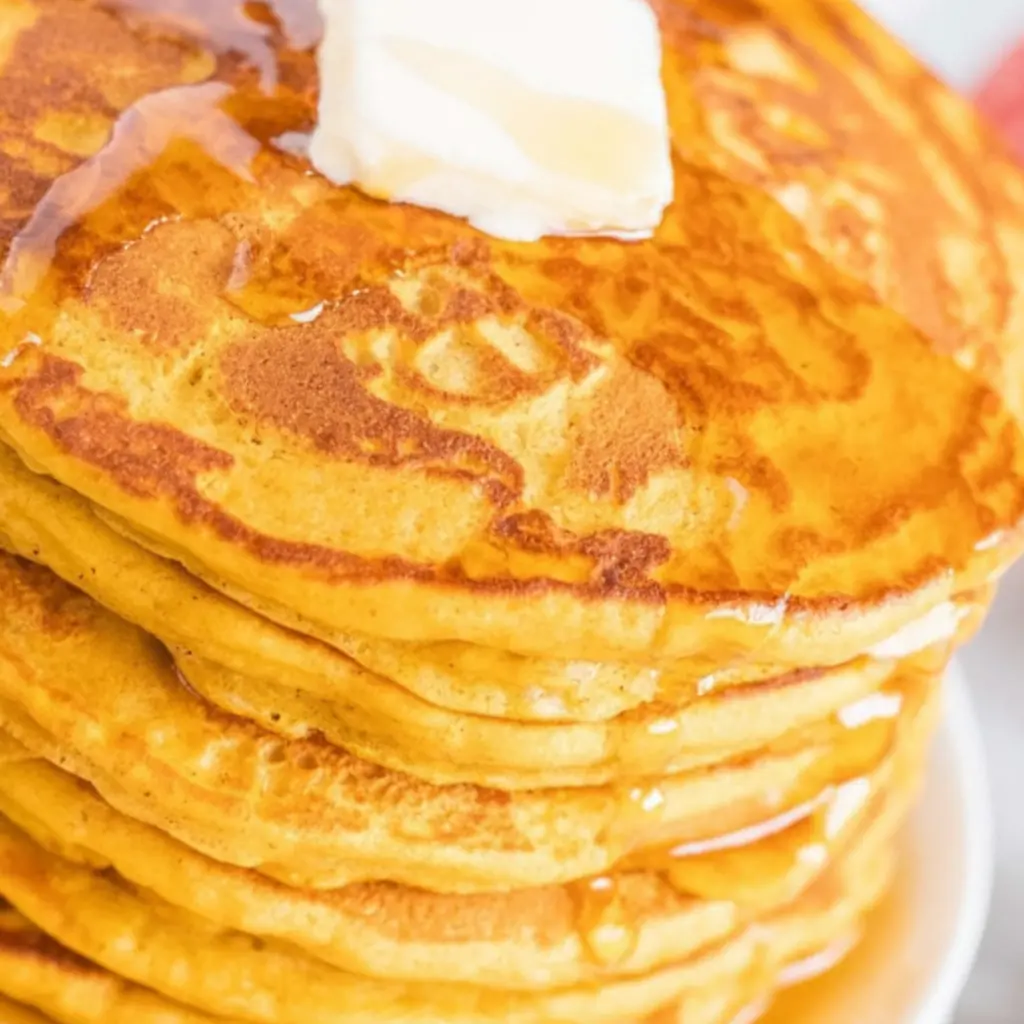
Conclusion
Pumpkin pancakes aren’t just breakfast—they’re a little ritual of comfort in my kitchen. They remind me to slow down, to use what I have, and to savor the season. I hope you’ll give this recipe a try and make it your own, whether that means adding chocolate chips, topping them with pecans, or simply enjoying them warm with syrup. If you do, I’d love to hear how they turned out for you—share your version, leave a note, or just tuck this recipe into your own morning traditions. Happy cooking, from my kitchen to yours.
Nutrition Information (per pancake, approximate)
- Calories: 140
- Carbohydrates: 22 g
- Protein: 3 g
- Fat: 4 g
- Fiber: 2 g
- Sugar: 6 g
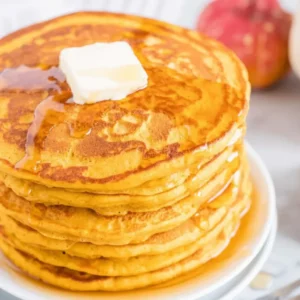
Pumpkin Pancakes
Ingredients
- 1 cup all-purpose flour
- 1 tbsp brown sugar
- 1 tbsp granulated sugar
- 1 tsp baking powder
- ½ tsp baking soda
- ½ tsp salt
- 1 tsp ground cinnamon
- ½ tsp ground nutmeg
- ¼ tsp ground ginger
- 1 cup milk or buttermilk for extra fluffiness
- ½ cup pumpkin purée
- 1 large egg
- 2 tbsp melted butter plus more for cooking
- 1 tsp vanilla extract
Instructions
- Mix dry ingredients: In a large bowl, whisk together flour, sugars, baking powder, baking soda, salt, cinnamon, nutmeg, and ginger.
- Combine wet ingredients: In another bowl, whisk milk, pumpkin purée, egg, melted butter, and vanilla until smooth.
- Make batter: Pour wet ingredients into dry ingredients and stir until just combined (do not overmix; a few lumps are fine).
- Cook pancakes: Heat a skillet or griddle over medium heat and grease lightly with butter. Pour ¼ cup of batter for each pancake. Cook until bubbles form on the surface (about 2 minutes), then flip and cook another 1–2 minutes until golden.
- Serve: Stack pancakes and top with butter, maple syrup, or whipped cream.
Notes
- For extra spice, add pumpkin pie spice instead of individual spices.
- Freeze leftovers: layer cooled pancakes with parchment paper and store in a freezer bag. Reheat in a toaster or oven.
- For healthier pancakes, use whole wheat flour and almond milk.
- Add chocolate chips, pecans, or walnuts for variation.

